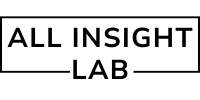Introduction
Top UI Frameworks for React Developers in 2026. React remains one of the most popular JavaScript libraries for building user interfaces. As of 2026, the React ecosystem continues to evolve, and so do the UI frameworks built to work with it. These frameworks provide reusable components, styling solutions, and responsive design tools that significantly speed up development time and improve UI/UX quality.
In this blog, we’ll explore the top UI frameworks every React developer should consider in 2026. We’ll cover their features, use cases, pros and cons, and real-world adoption.
Table of Contents
1. MUI (Material-UI)
Overview:
MUI is a React UI framework that implements Google’s Material Design. It’s one of the most popular and widely adopted UI libraries.
Key Features:
- Ready-to-use components following Material Design principles
- Theming and style customization
- Supports TypeScript out of the box
- Good documentation and community support
Use Case:
Great for enterprise-grade applications, dashboards, and any app needing clean, modern UIs.
Website:
2. Chakra UI
Overview:
Chakra UI is a simple, modular, and accessible component library that gives you the building blocks to create React applications with ease.
Key Features:
- Fully customizable components
- Built-in dark mode support
- Easy-to-understand styling props
- Strong focus on accessibility
Use Case:
Ideal for developers looking for flexibility and accessibility in design.
Website:
3. Ant Design
Overview:
Ant Design is a comprehensive design system and UI framework primarily used in enterprise applications.
Key Features:
- Enterprise-level components
- Extensive icon library
- High-quality design out-of-the-box
- Built-in internationalization (i18n)
Use Case:
Perfect for back-office applications, admin panels, and management systems.
Website:
4. Tailwind CSS (with Headless UI)
Overview:
Tailwind CSS is a utility-first CSS framework that allows developers to design directly in their markup. When paired with Headless UI, it provides fully accessible UI primitives.
Key Features:
- Atomic class-based styling
- Rapid prototyping
- Deep customization
- Excellent performance
Use Case:
Best for developers who prefer complete design control and want to create custom UIs from scratch.
Website:
5. Radix UI
Overview:
Radix UI offers low-level UI primitives for building high-quality design systems.
Key Features:
- Unstyled components with full accessibility support
- Focus on composition over configuration
- Very lightweight and customizable
Use Case:
Great for teams building custom component libraries or design systems.
Website:
6. React Bootstrap
Overview:
React Bootstrap replaces Bootstrap’s JavaScript with React components, providing seamless integration for Bootstrap lovers.
Key Features:
- Bootstrap-styled components as React elements
- Easy integration with existing Bootstrap themes
- Responsive grid system
Use Case:
Ideal for developers familiar with Bootstrap and looking for React-based implementations.
Website:
7. Mantine
Overview:
Mantine is a modern React component library with hooks and fully functional components.
Key Features:
- 100+ customizable components
- First-class TypeScript support
- Built-in dark theme toggle
- Form validation and hooks
Use Case:
Good for SaaS applications and rapid UI development with built-in utilities.
Website:
8. Next UI
Overview:
Next UI is a beautiful, fast, and modern React UI library designed for web apps with a futuristic aesthetic.
Key Features:
- Fast and accessible components
- Built for server-side rendering
- Beautiful animations and transitions
Use Case:
Great for portfolio sites, landing pages, and visually striking apps.
Website:
Choosing the Right Framework
When choosing a UI framework, ask yourself:
- What kind of application are you building?
- Do you need pre-styled components or flexibility?
- Is accessibility important to your users?
- How familiar are you with CSS or utility-based frameworks?
Combining multiple tools is also common (e.g., Tailwind + Headless UI, or Chakra UI + Framer Motion).
Conclusion
In 2026, React continues to dominate frontend development, and the UI frameworks around it are richer and more mature than ever. Whether you’re creating a personal portfolio, a business dashboard, or a full-blown SaaS platform, there’s a UI framework that fits your needs.
Start experimenting with a few and see which fits your development style best. Each of the frameworks above offers something unique—so don’t hesitate to mix and match until you find the right stack.
Useful Resources:
- Top React UI Libraries in 2026 – Dev.to
- Comparing React UI Frameworks – LogRocket Blog
- GitHub Trending React UI Projects
Happy coding!
Find more React content at: https://allinsightlab.com/category/software-development

